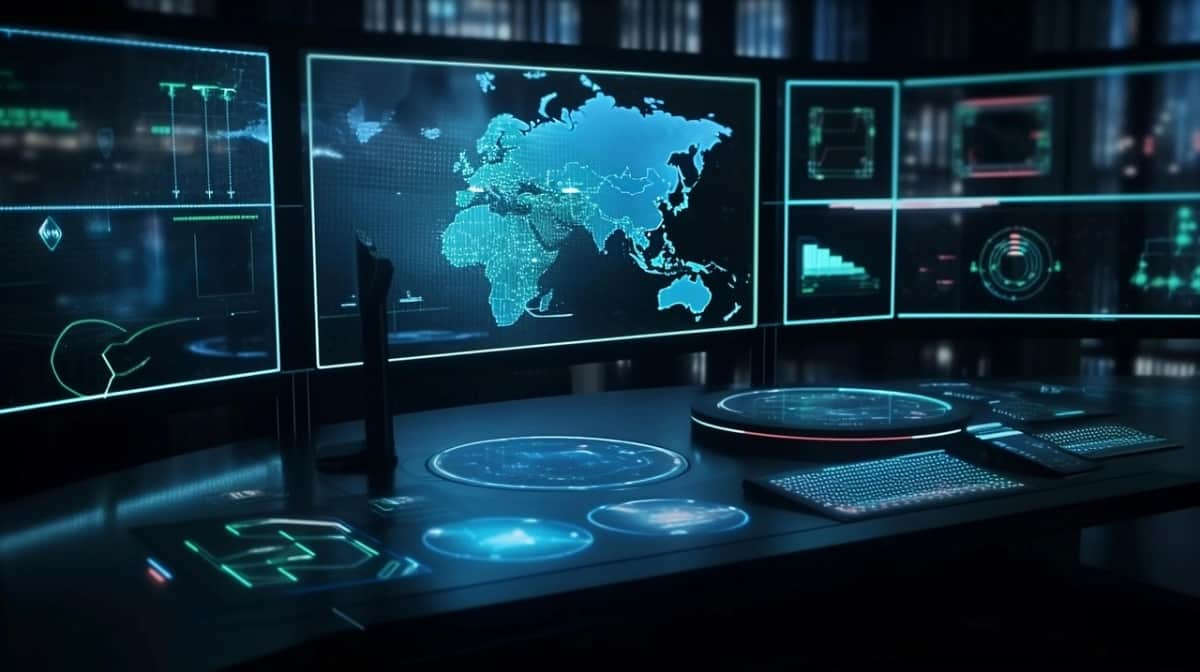SOC challenges like alert fatigue, skill shortages and slow response impact cybersecurity. AI-driven solutions enhance SOC efficiency, automation and threat detection.
In the latest technological era, SOCs which stands for Security Operations Centers play a prominent role in organizational protection. It protects organizations from cyber-attacks and threats. However, there are a lot of issues happening to the SOCs at the same time. These issues may be skills shortages, increasing complexities of the IT environment alert fatigue, etc.
These issues create a heavy problem for SOC operations and leave the organizations at the corner target for cyber attacks. But in this technological era, there may be a lot of solution available that makes an easy for Artificial Intelligence (AI).
As AI plays a crucial role in autonomous SOC benefits, therefore it proves a game changer for the SOC. In this article, we can discuss the SOC challenges and also shed light on the factors by which you can address these issues. This way you can able to find solutions and success to build a successful cybersecurity posture.
Addressing SOC Issues & The Role of AI Solutions
1. Alert Fatigue
Challenge:
Security Organization Centers (SOCs) have a high range of cybersecurity issues along with a high volume of alerts. There may be also low-priority incidents and false positives.
This puts pressure on the analysts and increases the risk of missing critical threat attacks.
How AI Helps?
AI-powered tools prioritize and analyze alerts based on their context and severity by using machine learning (ML).
In this way, AI minimizes alert fatigue by filtering the noise focusing on high-risk alerts, and prioritizing autonomous SOC benefits. And ensures the SOC analysts that they concentrate and focus on genuine threats.
2. Skill Shortages
Challenge:
Because of the shortage of skilled cybersecurity professionals, it is impossible and difficult for SOCs to operate and work effectively, especially when dealing with advanced threats.
How AI Helps:
AI helps in this regard by automating routine tasks like threat detection, incident triage, and log analysis, minimizing the dependency on human expertise. Autonomous SOC benefits allow the SOC teams to concentrate on more complex tasks, even with limited staff.
3. Slow Incident Response
Challenge:
The manual incident response process is slow and time-consuming, which allows the attackers to accelerate and speed up their activities and cause more damage.
How AI Helps:
AI automates the response workflows, enabling faster containment and remediation of threats by using AI-driven tools like Automation and Response (SOAR) and Security Orchestration platforms.
4. Complex IT Environments
Challenge:
Today’s IT environments are highly complex and complicated because they use IoT devices, cloud services, and remote workforces which create visibility gaps for SOCs.
How AI Helps:
AI correlates data from multiple sources by providing autonomous SOC benefits and unified visibility across hybrid environments. It identifies the alerts and possible threats across the whole infrastructure, to ensure that no blind spot is left unchecked.
5. Advanced Threat Detection
Challenge:
Traditional tools are in process and struggling to find and detect advanced threats like fileless malware, zero-day exploits, and APTs ( Advanced Persistent Threats).
How AI Helps:
Artificial Intelligence (AI) utilizes anomaly detection for the proof and setting of unusual patterns. These unusual patterns help to indicate upcoming attacks and threats.
Autonomous SOC benefits can detect previously unknown threats in real-time by learning from historical data.
6. Insufficient Threat Intelligence
Challenge:
It may be tough to respond to the issue of security organized centers. The reason behind this is that they often lack threat intelligence.
How AI Helps:
Threat intelligence platforms which are powered by AI study and analyze data from multiple sources, and give us real-time data and insights of emerging threats. This enables the SOCs to stay ahead of attackers and make informed decisions.
7. High Volume of Data
Challenge:
SOCs analyze and process large amounts of data from endpoints, network traffic, and logs, which is impossible for human analysts to analyze and study and becomes a burden for them.
How AI Helps:
AI proceeds large amounts of data efficiently and quickly by identifying the correlations, anomalies, and patterns that would be impossible for humans to detect manually, and enables more accurate and faster threat detection.
8. Proactive Threat Hunting
Challenge:
Instead of proactive threat hunting, many SOCs operate in a reactive mode for responding to alerts.
How AI Helps:
AI by analyzing the historical data and by identifying the indicators of compromise (IOC) enables proactive threat hunting. Autonomous SOC benefits also give us suggestions for further investigation. So we can say that it further empowers SOC analysts to take a proactive approach.
9. Insider Threats
Challenge:
With traditional tools, it is difficult to detect insider threats like compromised accounts and malicious employees.
How AI Helps:
To monitor the user activity and to detect the anomalies that may indicate insider threats this AI uses User and Entity Behaviour Analytics (UEBA). AI can also identify suspicious actions and alert SOC teams by analyzing the behaviour patterns.
10. Resource Constraints
Challenge:
There is a lack of budget and resources for many organizations to build and maintain a fully functional and working SOC.
How AI Helps:
AI helps in this regard in such a way, by automating repetitive tasks and improving efficiency and this results in a reduction of operational costs. Without any substantial investments in infrastructure and personnel, it also enables small organizations to leverage advanced cybersecurity capabilities.
Conclusion:
The challenges faced by the SOCs are many, but AI offers and gives simple solutions for them on how to overcome them. SOCs increase their ability to respond, detect, and mitigate cyber threats by using AI-driven tools and technologies.
With the continuous evolution of cyber threats, organizations that are equipped with AI are in a better position to build effective and proper cybersecurity protection.
AI is just not a tool, it is a strategic autonomous SOC benefit in the war against cybercrime. AI is completely changing the way how SOCs operate by minimizing alert fatigue and improving incident response to enable proactive threat hunting and addressing skills shortages.
Featured Image via: PixaBay/Cliff1126









